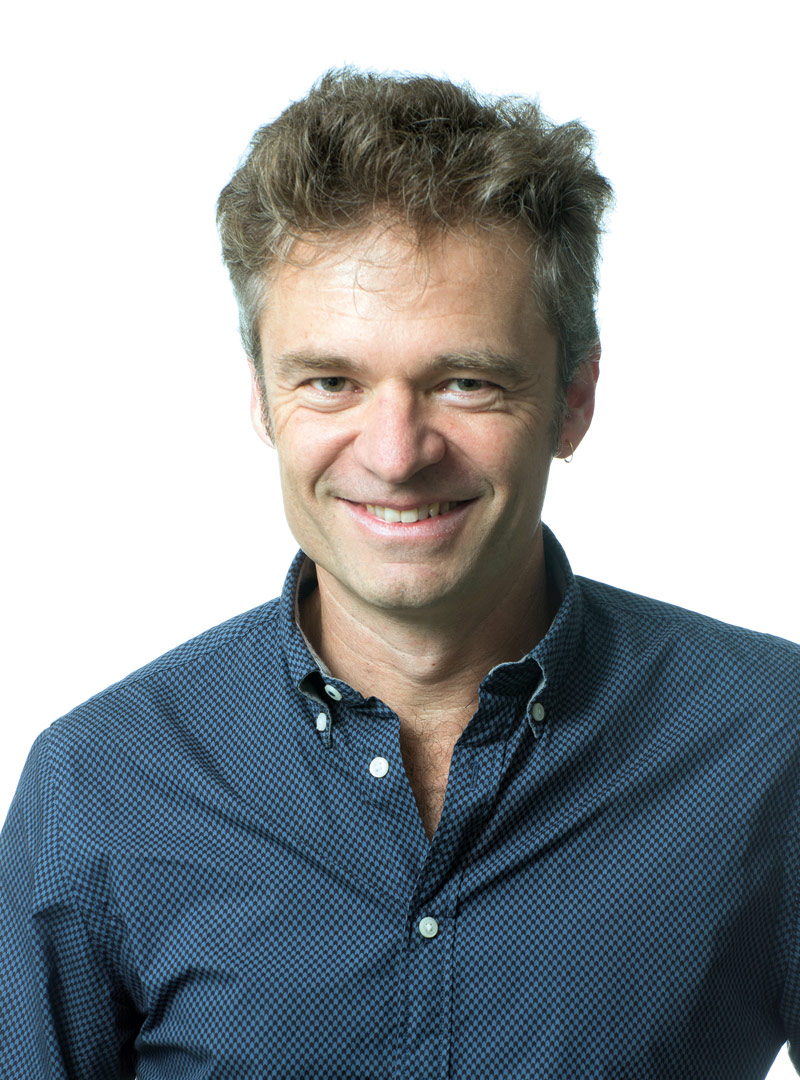Short Biography
Christian Fankhauser received his PhD from the University of Lausanne in 1994, after carrying out his thesis at the Swiss Institute for Experimental Cancer Research (ISREC) in the laboratory of Dr. Viesturs Simanis. He performed postdoctoral studies with Dr. Marty Yanofsky at UCSD and thereafter with Dr. Joanne Chory at The Salk Institute for Biological Studies in San Diego. He became a Swiss National Science Foundation Assistant Professor at the Department of Molecular Biology of the University of Geneva in 2000. He joined the Center for Integrative Genomics in January 2005, where he was appointed Associate Professor. In 2011 he was promoted to Professor.

CHRISTIAN FANKHAUSER – RESEARCH REPORT
Light regulation of plant growth and development
Almost all our food, feed, fuel and fiber ultimately derive from plants. Plant growth depends on photosynthesis, the process in which light energy is harnessed for the synthesis of high-energy carbon compounds. In order to capture light, plants have evolved unique ways of building cells, tissues and organs, a highly diverse metabolism, and a life-long continuation of versatile growth and development. Plants possess numerous photoreceptors enabling them to sense changes in the amount, spectral composition (color), photoperiod and direction of light. The central goal of our research is to understand how plants manage to gain access to direct sunlight when this resource becomes limiting. This occurs at high plant density leading to specific growth and developmental strategies such as the Shade Avoidance Syndrome (SAS) and Phototropism. We use the model plant Arabidopsis thaliana to study the molecular events leading from light perception to the physiological responses elicited by unfavorable light signals.
Leaves strongly absorb red and blue light while far-red (700-800 nm) is transmitted or reflected. In sunlight the red to far-red ratio (R/FR) is slightly above 1, this ratio drops in the proximity of plants due to FR reflection and further decreases under foliar shade. In response to such a decrease in the R/FR ratio plants elicit a number of growth and developmental adaptations. Such responses are triggered by neighbor proximity in anticipation of potential shading and enhanced in true shade. Collectively this is known as the Shade Avoidance Syndrome, which includes elongations of stems, upwards movements of leaves, changes in branching architecture and acceleration of reproduction. Changes in R/FR are sensed by the phytochrome (phy) family of photosensory receptors with phyB playing a prominent role in Arabidopsis. Sunlight activates phyB leading to a conformational change that enables binding to and inhibition of transcription factors from the Phytochrome Interacting Factor (PIF) family. This inhibition is released in the shade as phyB returns to its inactive state enabling PIFs to promote several facets of the SAS. An important mechanism by which the PIFs promote stem elongation in the shade is the induction of several YUC genes, which code for enzymes catalyzing a rate-limiting step in auxin biosynthesis (reviewed in de Wit et al., 2016). While phyB plays a major role in controlling the extent of organ elongation, the blue light sensing phototropins (phot1 and phot2 in Arabidopsis) control growth direction enabling plants to orient their organs towards favorable light conditions. Over the past couple of years we pursued our investigations of phyB and phot-mediated signaling, we studied the crosstalk between both pathways as in natural environments signals from both photoreceptors have to be integrated and we started to look into organ-specific light responses.

In response to shade, stems and petioles elongate while expansion of the leaf and cotyledon blade is limited. Using a combination of genome-wide expression analysis and molecular genetics we investigated the organ-specific shade response in seedlings (Kohnen et al., 2016) and in leaves (blade vs. petiole) later in the plant life cycle (de Wit et al., 2015). Both studies showed that the early shade response triggers an induction of auxin levels and a strong auxin response in all parts of the plant analysed. However, later the response becomes organ specific and the selective elongation of specific organs appears to depend on additional organ-specific hormonal responses and differences in auxin signalling (de Wit et al., 2015; Kohnen et al., 2016).
Our work on phototropin signalling showed that phot1 signals from the plasma membrane and that photoreceptor internalisation is not required to trigger phototropin-mediated responses (Preuten et al., 2015). Phototropism is typically studied in etiolated seedlings as they first see the light. This model has been used for more than a century and enabled the identification of key signalling events (reviewed in Fankhauser and Christie, 2015). However, phototropism also occurs in green photoautotrophic plants but little is known about signalling at this developmental stage and its integration with other photoreceptor-mediated responses. We showed that in green seedlings in high R/FR conditions typical of sunlight phototropism is inhibited by phyB. In contrast when the R/FR ratio declines phototropism is gradually enhanced in a process requiring the PIF-YUC regulon (Goyal et al., 2016). Moreover, our work identifies phototropism signalling elements that are selectively required for phototropism in green but not etiolated seedlings, demonstrating developmental regulation of phototropin signalling (Goyal et al., 2016). Moreover, in collaboration with the Pierik lab, we identify a mechanism underlying enhanced SAS in true shade compared to neighbour detection that sheds further light on photoreceptor crosstalk (de Wit et al., 2016).

GROUP MEMBERS
Group Leader
Christian Fankhauser
christian.fankhauser@unil.ch
Research Assistant
Markus Kohnen
Post-doctoral Fellows
Alessandra Boccaccini
Mieke de Wit
Anne-Sophie Fiorucci
Vinicius Costa Galvao
Anupama Goyal
Emanuel Schmid
Fabien Sénéchal
PhD Students
Yetkin Ince
Olivier Michaud
Paolo Schumacher
Master Student
Olivier Gustarini
Technical Assistants
Martine Trevisan
Laure Allenbach Petrolati
Technicians Assistants
Nicolo Tartini
Perrine Steffe
Cécile Escher
Visiting Student
Hajar Myriam Outdili
Administrative assistant Nathalie Clerc
nathalie.clerc@unil.ch
